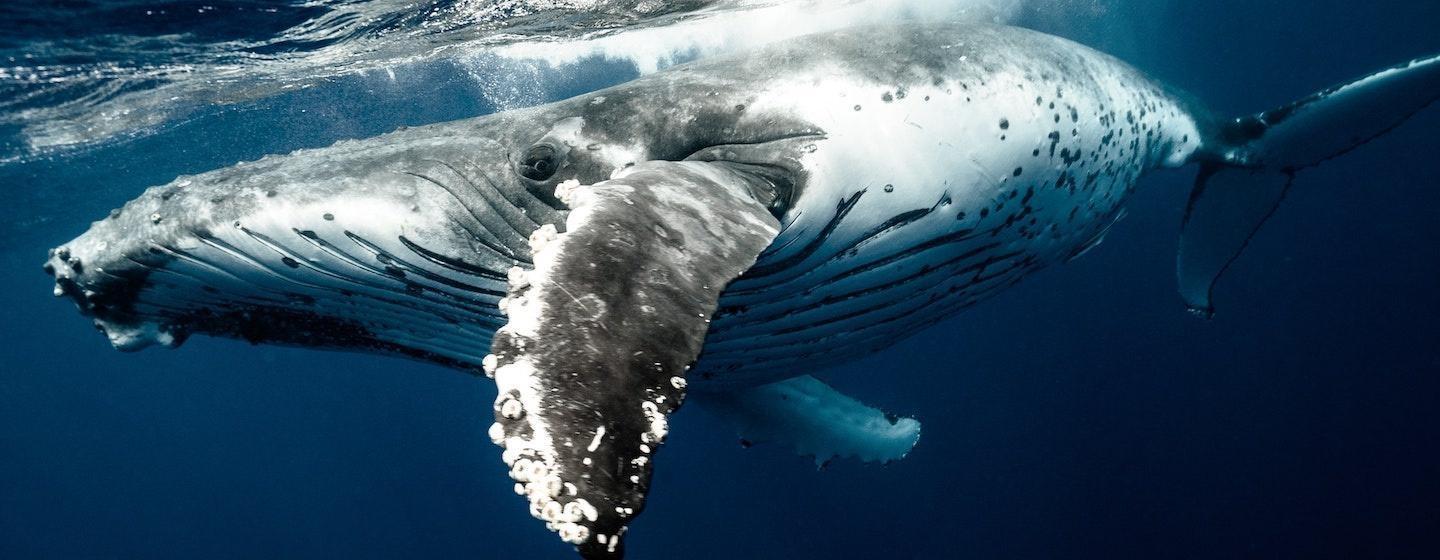Whales Eat More Than We Thought


Drones and acoustic tags on whales have given researchers new insight into how much whales eat. And you guessed it: A LOT!
A new study reports that baleen whales may eat significantly more than previously estimated. Baleen whales include several well-known species of whales such as humpback and blue whales. The study, “Baleen whale consumption based on high-resolution foraging measurements,” was published in Nature in November.
In the past, researchers estimated how much whales eat by looking at bioenergetic models based on estimated metabolic rates. In other words, how much energy would a large whale need to survive, and how much food was needed to generate that much energy.
Scientists also performed autopsies on dead whales to measure how much was in their stomachs. Of course, what is found in a whale’s stomach may not reflect what is eaten every day.
The new research utilized data from 321 tags deployed on whales of seven baleen species. The tags are about the size of half of a grapefruit and attach to the whales using suction cups. They work essentially like a smartphone, transmitting several types of data to receivers. While the tag sent information about the whale’s movements, acoustic measurements of fish populations near the whales provided data about how much prey was available to consume.
Drones provided by the Duke Marine Robotics and Remote Sensing Lab in Beaufort completed the data collection plan. Drones flown above the whales recorded not only the altitude above the creature but also allowed researchers to calculate the whale’s length. The whale’s length allowed researchers to estimate how much sea water/prey a whale could gulp.
Yep, one big swallow!
The prey for baleen whales is krill, which are tiny shrimp-like crustaceans that are about the size of a paperclip. The whales take a gulp and use the baleen that stretches between their jaws to filter out the sea water and save the krill for food.
And it turns out that whale gulp shows up on those tags attached to the whale.
"Think about how fast you move when you’re running to get something,” said David Johnston, Director of the Duke Marine Lab and associate professor of the practice of marine conservation ecology at Duke. Johnston talked with Coastal Review Online. “It’s the same with a whale. When the animal feeds it accelerates quickly but then when it opens its mouth, it’s like a big parachute that slows the animal down,” Johnson added.
That dramatic change in velocity shows up as a very distinctive signature in the accelerometer data that’s on the tag.
The gulp size calculations along with the number of gulps and the prey availability assessments allowed the researchers to get a good idea of how much each whale was eating. They found that median daily prey consumption was between 5-30 percent of a whale’s body mass. The findings will help scientists get a more complete view of the ocean’s food web.